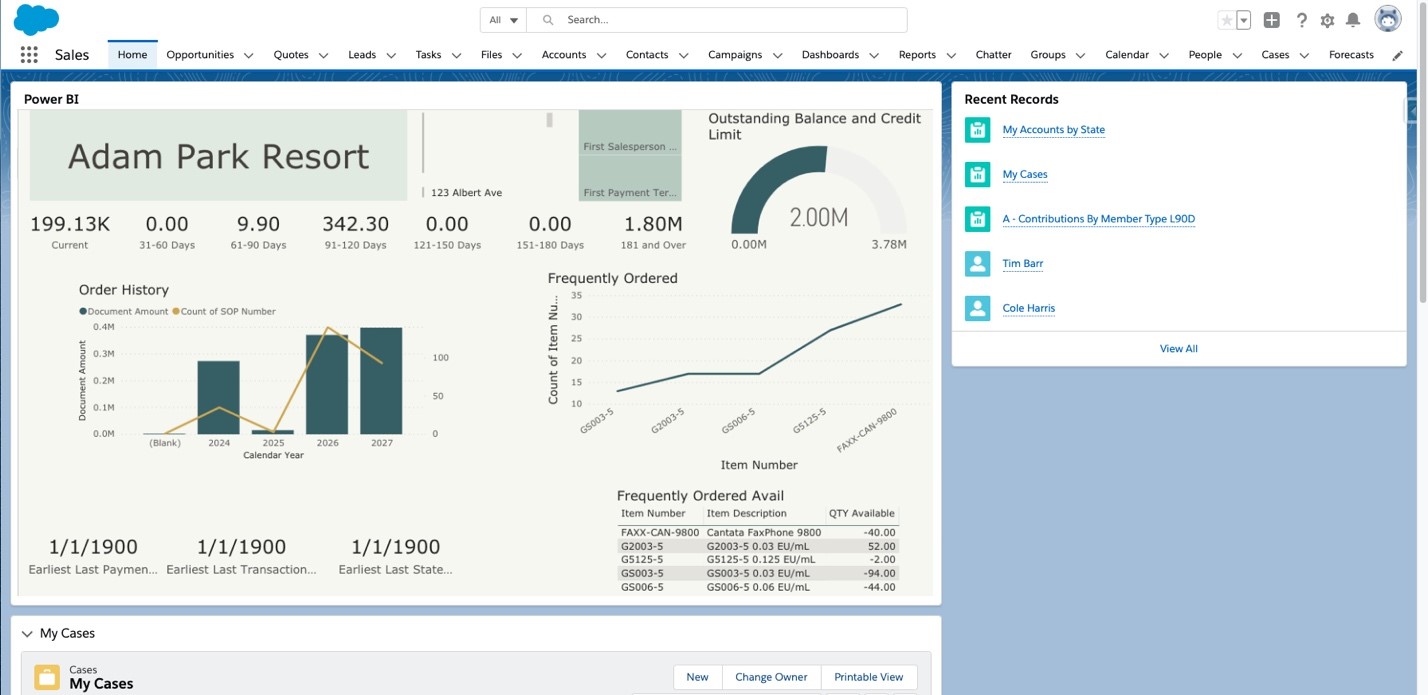You might have heard of Microsoft Power BI and Salesforce, but have you heard of them being used in tandem to create an even more powerful solution?
What are Salesforce and Power BI?
Salesforce is the world’s leading customer relationship Management (CRM) platform. Its cloud platform helps marketing, sales, service, and IT come together on one platform to support a number of different industries including financial services, manufacturing, health, and many more.
Power BI is a business intelligence platform that helps organizations collect, manage and visualization their data. It is used to collect data and run reports so organizations can have valuable insights into their business.
How are the two related?
Salesforce is where all your organization’s rich customer data lives. On this platform, you keep your 360 degree view of your customers and even your competitors. This information holds insights into your business that can be leveraged to improve your organization.
Power BI is where you collect data and visualize it. After all, data is just data until you apply context. When data is processed, analyzed, and visualized is when data turns into information. This platform is what turns your data into information.
Hopefully, you can start to get the picture. In one system you have all your customer rich data, which I have to admit does have to great standard reporting and visualizing tools. It even has one business intelligence platform (Einstein analytics). The second you have a powerful platform that turns customer data into real time insights. Combining these two platforms can give your organization powerful insights using beautifully built dashboards and reports.
Connecting the Platforms
Power BI gives users the ability to easily connect with their Salesforce account, so they can retrieve their Salesforce data in Power BI. This can be done by downloading the “Analytics for Salesforce” app and connecting it to your org using your Salesforce credentials. You can then begin to select predefined dashboards and custom reports from your org. The reports you choose will match your views from Salesforce into this data. You can then begin to change how you would like to visualize your data and customize the dashboards to how you want it.
Displaying Power BI Reports in Salesforce
We just talked about displaying your Salesforce data in Power BI, but what if you already have pre-built dashboards connected to your ERP or another platform that you would like to visualize inside of Salesforce? This is a problem we have seen before. Luckily, Salesforce allows you to embed Power BI dashboards into any app within Salesforce while retaining the function of the dashboard.

In the image above you can see a Power BI dashboard that lives on its own platform being shown right on a Salesforce homepage. This allows Power BI to handle your pre-exiting data models and large data volumes while easily giving access to these reports to your organization’s Salesforce users.
Summary
These are powerful platforms in their own right. Organizations using the two separately see benefits of the two systems on their own, but not often together. By connecting these two systems, you give Power BI access to your rich CRM data that can be used to give your organization powerful insights. On the flip side, you can also directly embed already established Power BI dashboards on any app in Salesforce that you wish, supplying Salesforce users with power insights held in Power BI.
This publication contains general information only and Sikich is not, by means of this publication, rendering accounting, business, financial, investment, legal, tax, or any other professional advice or services. This publication is not a substitute for such professional advice or services, nor should you use it as a basis for any decision, action or omission that may affect you or your business. Before making any decision, taking any action or omitting an action that may affect you or your business, you should consult a qualified professional advisor. In addition, this publication may contain certain content generated by an artificial intelligence (AI) language model. You acknowledge that Sikich shall not be responsible for any loss sustained by you or any person who relies on this publication.









